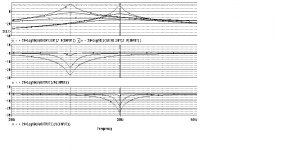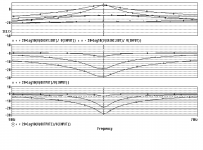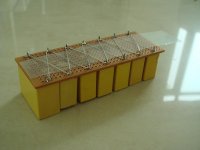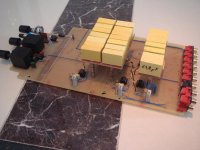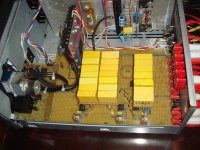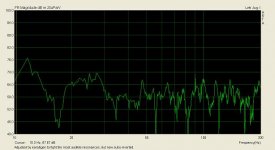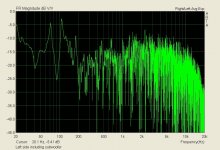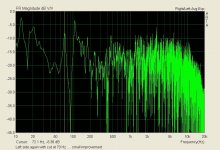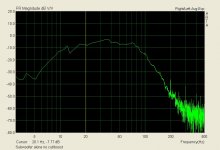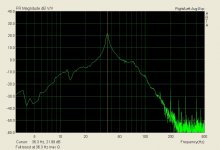Take care with high Q active filters you might find quite high output voltages at the concerned OP amps. Here the concerned OP is the gyrator OP.
For this reason I have to step down the signal first, then notch it and amplify again in the end.
My OP amp choice: OPA2134
For budget solutions the TL072 would also work, but make about 3db more noise.
Forget all bipolar low noise OP amps here. Their input current noise multiplied with the source resistances of this circuit will end up in higher noise. You need a low noise FET-OP.
For this reason I have to step down the signal first, then notch it and amplify again in the end.
My OP amp choice: OPA2134
For budget solutions the TL072 would also work, but make about 3db more noise.
Forget all bipolar low noise OP amps here. Their input current noise multiplied with the source resistances of this circuit will end up in higher noise. You need a low noise FET-OP.
Attachments
I decided to put the notch filters etc. into the same enclosure (reuse of my NAD, which was killed during my last move) with my Rookie amps.
This allows to use the terminals and all unused mechanics. Quite convinient
First the block diagram of the entire signal conditioning board.
This allows to use the terminals and all unused mechanics. Quite convinient
First the block diagram of the entire signal conditioning board.
Attachments
....Ok...OK... it's quick'n dirty, but I was impatient.
Short interuption of my class D project in order to get proper bass NOW.
And frankly speaking, up to now these breadboard protos usually work pretty fine, even langer than 10 years of daily use.
Short interuption of my class D project in order to get proper bass NOW.
And frankly speaking, up to now these breadboard protos usually work pretty fine, even langer than 10 years of daily use.
Attachments
Arta Measurements
Hi There
I'v finally got around to do some measurements.
We'll as I thought there is a lot to be done in my room if I wan't some better sound.
You can see my measurements of left side speaker (set to small) + subwoofer here .... not so pretty
Hi There
I'v finally got around to do some measurements.
We'll as I thought there is a lot to be done in my room if I wan't some better sound.
You can see my measurements of left side speaker (set to small) + subwoofer here .... not so pretty

Attachments
Here I have tuned the parametric equalizer to max Q and max cut at 70 Hz where there is a big room mode. Clear improvement, and easy to hear, but I need to do a lot more than can be done with electronics 
From first measurenment to second, I moved the mic (as I did some other measurements) so the improvement might be somewhat bigger!
From first measurenment to second, I moved the mic (as I did some other measurements) so the improvement might be somewhat bigger!
Attachments
Pretty nice!
I am playing with two 30 litre sadhara cubes.
http://www.diyaudio.com/forums/showthread.php?s=&threadid=55880&highlight=
Up to now powering still with my old 8x150W monster, means 600W for each cube.
http://www.diyaudio.com/forums/showthread.php?s=&threadid=36469&highlight=
How is this going on?
http://www.diyhifi.org/forums/viewtopic.php?f=22&t=1321&sid=e526f56d6c90a12a6f5d1f37075055e9
- Status
- This old topic is closed. If you want to reopen this topic, contact a moderator using the "Report Post" button.
- Home
- Loudspeakers
- Subwoofers
- Notch Filter Design
